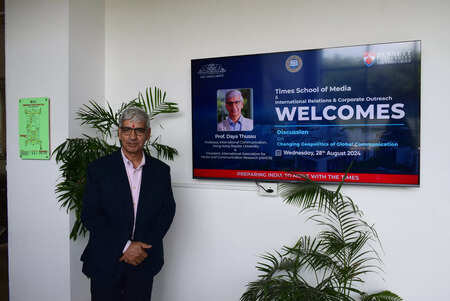The Fukushima nuclear disaster
Times of Bennett | Updated: Apr 12, 2023 15:27

By Jai Goyal
Once upon a time inJapan there was a small town called Fukushima . It was a peaceful place surrounded by nature and farmland. However, on March 11, 2011, everything changed when a massive earthquake struck the area, followed by a tsunami that devastated the town and the surrounding areas.
On that fateful day, at 2:46 pm, a magnitude 9.0 earthquake hit the east coast ofJapan . It was the largest earthquake ever recorded in the country, causing widespread damage, and triggering a massive tsunami that swept over the coastal towns and villages, including Fukushima .
TheFukushima Daiichi nuclear power plant, located in the town of Okuma, was hit by the tsunami, causing a series of explosions and meltdowns in three of the plant's six reactors. The disaster unfolded quickly, and within hours, it became clear that the situation at the Fukushima plant was dire.
Over the next few days, workers at the plant struggled to contain the radiation and prevent a full-scalenuclear disaster . They worked tirelessly, putting their own lives at risk to stabilize the reactors and prevent a further release of radioactive material into the environment.
On March 14, the Japanese government ordered the evacuation of everyone living within a 20-kilometer radius of the plant. The decision was made to protect people from the potential harm caused by radiation exposure. The evacuation order was later expanded to include a 30-kilometer radius around the plant.
On March 15, an explosion occurred at reactor 2, releasing a large amount of radioactive material into the environment. The situation at the plant was becoming increasingly dire, and it was unclear whether the workers could prevent a full-scalenuclear disaster .
Over the next few weeks, workers continued to work around the clock to contain the radiation and stabilize the reactors. They faced numerous challenges, including the need to pump water into the reactors to cool them down, the risk of explosions, and the potential for further leaks of radioactive material.
In the aftermath of thedisaster , more than 160,000 people were evacuated from their homes and the area around the plant was declared a no-go zone. The disaster had a significant impact on the people of Fukushima, who lost their homes, businesses, and way of life.
The aftermath of the Fukushima disaster was devastating. The Japanese government and the plant's operator,Tokyo Electric Power Company (TEPCO), were criticized for their handling of the crisis and their lack of transparency in sharing information with the public.
The environmental impact of the disaster was also significant, with radioactive material spreading throughout the air, soil, and water in the surrounding areas. Many farmers were forced to abandon their land, and seafood from the region was found to be contaminated with radioactive material.
The disaster also had a significant impact on thenuclear industry, with many countries reevaluating their reliance on nuclear power in the wake of the Fukushima disaster.
In conclusion, the Fukushima disaster was a tragic event that had far-reaching consequences for the people of Japan and the world. While efforts continue to contain the radiation and mitigate the environmental impact of the disaster, the events of March 11, 2011, serve as a stark reminder of the risks associated with nuclear power and the importance of safety and transparency in the industry.
Once upon a time in
On that fateful day, at 2:46 pm, a magnitude 9.0 earthquake hit the east coast of
The
Over the next few days, workers at the plant struggled to contain the radiation and prevent a full-scale
On March 14, the Japanese government ordered the evacuation of everyone living within a 20-kilometer radius of the plant. The decision was made to protect people from the potential harm caused by radiation exposure. The evacuation order was later expanded to include a 30-kilometer radius around the plant.
On March 15, an explosion occurred at reactor 2, releasing a large amount of radioactive material into the environment. The situation at the plant was becoming increasingly dire, and it was unclear whether the workers could prevent a full-scale
Over the next few weeks, workers continued to work around the clock to contain the radiation and stabilize the reactors. They faced numerous challenges, including the need to pump water into the reactors to cool them down, the risk of explosions, and the potential for further leaks of radioactive material.
In the aftermath of the
The aftermath of the Fukushima disaster was devastating. The Japanese government and the plant's operator,
The environmental impact of the disaster was also significant, with radioactive material spreading throughout the air, soil, and water in the surrounding areas. Many farmers were forced to abandon their land, and seafood from the region was found to be contaminated with radioactive material.
The disaster also had a significant impact on the
In conclusion, the Fukushima disaster was a tragic event that had far-reaching consequences for the people of Japan and the world. While efforts continue to contain the radiation and mitigate the environmental impact of the disaster, the events of March 11, 2011, serve as a stark reminder of the risks associated with nuclear power and the importance of safety and transparency in the industry.











